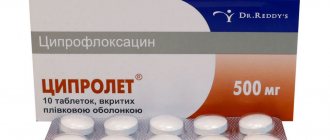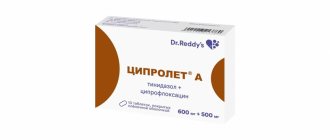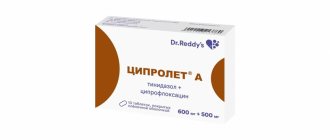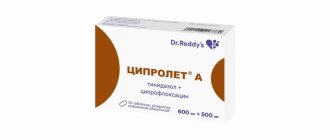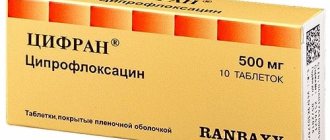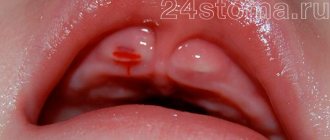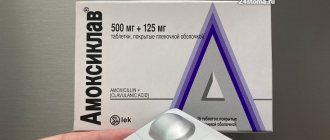Home | About us | Delivery | Advertisers | Login | Registration
Delivery on Sundays and holidays does not work!
- Medicines
- dietary supplementsVitamins
- Categories from A to Z
- Brands from A to Z
- Products from A to Z
- Medical equipment
- beauty
- Child
- Care
- Honey products appointments
- Herbs and herbal teas
- Medical nutrition
- Journey
- Making medicinesStock
Pharmacy online is the best pharmacy in Almaty, delivering medicines to Almaty. An online pharmacy or online pharmacy provides the following types of services: delivery of medicines, medicines to your home. Online pharmacy Almaty or online pharmacy Almaty delivers medicines to your home, as well as home delivery of medicines in Almaty.
my basket
Apteka84.kz is an online pharmacy that offers its customers medicines, medicinal and decorative cosmetics, dietary supplements, vitamins, baby food, intimate products for adults, medical equipment and thousands of other medical and cosmetic products at low prices. All data presented on the Apteka84.kz website is for informational purposes only and is not a substitute for professional medical care. Apteka84.kz strongly recommends that you carefully read the instructions for use contained in each package of medicines and other products. If you currently have any symptoms of the disease, you should seek help from a doctor. You should always tell your doctor or pharmacist about all the medicines you take. If you feel you need further help, please consult your local pharmacist or contact our GP online or by telephone.
© 2022 Pharmacy 84.
Tsiprolet A tablets p/o 500mg/600mg No. 10x1
Name
Tsiprolet A tab. p/o 500 mg/600 mg per bl. in pack №10x1
Description
Film-coated tablets from white to almost white, oval in shape, with a scoring line on one side and smooth on the other; cross-sectional appearance: white to light yellow.
Main active ingredient
Ciprofloxacin, Tinidazole
Release form
Film-coated tablets from white to almost white, oval in shape, with a scoring line on one side and smooth on the other; cross-sectional appearance: white to light yellow. 1 tab. Active substance: ciprofloxacin hydrochloride monohydrate 582.285 mg, which corresponds to the content of ciprofloxacin 500 mg; tinidazole 600 mg; Excipients: corn starch - 35 mg, croscarmellose sodium - 27.476 mg, microcrystalline cellulose - 20.33 mg, sodium carboxymethyl starch (type A) - 5 mg, colloidal silicon dioxide - 3.952 mg, talc - 8.952 mg, magnesium stearate - 7 mg. Shell composition: opadry white - 40 mg (hypromellose - 55.46%, talc - 19.84%, titanium dioxide - 11.93%, macrogol 6000 - 11.09%, polysorbate 80 - 0.84%, sorbic acid - 0.84%). 10 pieces. - blisters (1) - cardboard packs.
Dosage
500mg/600mg per bl. in pack №10x1
special instructions
The possibility of cross-allergic reactions should be taken into account. Patients with hypersensitivity to other imidazole derivatives may develop cross-sensitivity to tinidazole; the development of a cross-allergic reaction to ciprofloxacin is also possible in patients with hypersensitivity to other fluoroquinolone derivatives. During treatment, it is recommended to avoid contact with direct sunlight. If photosensitivity reactions occur, you should immediately stop using the drug. During the treatment period, it is not recommended to take ethanol (risk of developing disulfiram-like reactions against the background of tinidazole, which is part of the drug). To avoid the development of crystalluria, the recommended daily dose should not be exceeded; sufficient fluid intake and maintaining an acidic urine reaction are also necessary. The drug causes dark coloration of urine, which has no clinical significance. In patients with epilepsy, a history of seizures, vascular diseases and organic brain damage, due to the risk of developing adverse reactions from the central nervous system, the drug should be prescribed only for health reasons. If severe and prolonged diarrhea occurs during or after treatment, the diagnosis of pseudomembranous colitis should be excluded, which requires immediate discontinuation of the drug and the appointment of appropriate treatment. If pain appears in the tendons or when the first signs of tenosynovitis appear, treatment should be stopped. When treating for more than 6 days, peripheral blood patterns should be monitored. Influence on the ability to drive vehicles and operate machinery. During treatment, the patient should refrain from engaging in potentially hazardous activities that require increased concentration and speed of psychomotor reactions.
pharmachologic effect
A combined drug whose effect is determined by the components included in its composition. Ciprofloxacin is a broad-spectrum antimicrobial agent, a fluoroquinolone derivative, that inhibits bacterial DNA gyrase (topoisomerases II and IV, responsible for the process of supercoiling of chromosomal DNA around nuclear RNA, which is necessary for reading genetic information), disrupts DNA synthesis, growth and division of bacteria; causes pronounced morphological changes (including cell wall and membranes) and rapid death of the bacterial cell. It has a bactericidal effect on gram-negative organisms during the period of rest and division (since it affects not only DNA gyrase, but also causes lysis of the cell wall), on gram-positive microorganisms - only during the period of division. Low toxicity for the cells of the macroorganism is explained by the absence of DNA gyrase in them. While taking ciprofloxacin, there is no parallel development of resistance to other antibiotics that do not belong to the group of gyrase inhibitors, which makes it highly effective against bacteria resistant to aminoglycosides, penicillins, cephalosporins, tetracyclines and many other antibiotics. Ciprofloxacin is active against gram-negative aerobic bacteria: Escherichia coli, Salmonella spp., Shigella spp., Citrobacter spp., Klebsiella spp., Enterobacter spp., Proteus mirabilis, Proteus vulgaris, Serratia marcescens, Hafnia alvei, Edwardsiella tarda, Providencia spp., Morganella morganii, Vibrio spp., Yersinia spp.; other gram-negative bacteria - Haemophilus spp., Pseudomonas aeruginosa, Moraxella catarrhalis, Aeromonas spp., Pasteurella multocida, Plesiomonas shigelloides, Campylobacter jejuni, Neisseria spp.); some intracellular pathogens - Legionella pneumophila, Brucella spp., Listeria monocytogenes, Mycobacterium tuberculosis, Mycobacterium kansasii; gram-positive aerobic bacteria: Staphylococcus spp. (Staphylococcus aureus, Staphylococcus haemolyticus, Staphylococcus hominis, Staphylococcus saprophyticus), Streptococcus spp. (Streptococcus pyogenes, Streptococcus agalactiae). Most staphylococci resistant to methicillin are also resistant to ciprofloxacin. Resistance develops extremely slowly, since, on the one hand, after the action of ciprofloxacin there are practically no persistent microorganisms left, and on the other hand, bacterial cells do not have enzymes that inactivate it. The following are resistant to the drug: Bacteroides fragilis, Pseudomonas cepacia, Pseudomonas maltophilia, Ureaplasma urealyticum, Clostridium difficile, Nocardia asteroides. Not effective against Treponema pallidum. Tinidazole is an antiprotozoal and antimicrobial agent, an imidazole derivative. Active against Trichomonas vaginalis, Entamoeba histolitica, Lamblia, as well as pathogens of anaerobic infections - Clostridium spp., Bacteroides fragilis, Bacteroides melaninogenicus, Eubacter spp., Fusobacterium spp., Peptococcus spp. and Peptostreptococcus spp. Being a highly lipophilic compound, tinidazole penetrates into Trichomonas and anaerobic microorganisms, where it is reduced by nitroreductase, inhibits synthesis and damages the DNA structure.
Pharmacokinetics
Absorption Both ciprofloxacin and tinidazole are well absorbed from the gastrointestinal tract after oral administration. Eating slows down absorption, but does not change Cmax and bioavailability. Distribution Ciprofloxacin Bioavailability - 50-85%, Vd - 2-3.5 l/kg, plasma protein binding - 20-40%, Tmax after oral administration - 60-90 min, Cmax after oral administration at a dose of 500 mg - 0.2 mcg/ ml. Tinidazole Bioavailability - 100%, plasma protein binding - 12%, Tmax after oral administration - 2 hours, Cmax after oral administration at a dose of 500 mg - 47.7 mcg/ml. Metabolism and excretion Tinidazole penetrates into the cerebrospinal fluid in a concentration equal to that in plasma and is reabsorbed in the renal tubules. T1/2 - 12-14 hours. Tinidazole is metabolized in the liver with the participation of the cytochrome P450 (CYP3A4) enzyme system. About 50% is excreted in bile, 25% in the kidneys, and 12% in the form of metabolites. It is reabsorbed in the renal tubules. Ciprofloxacin penetrates well into body fluids and tissues (excluding fat-rich tissue, such as nervous tissue). The concentration in tissues is 2-12 times higher than in plasma. Therapeutic concentrations are achieved in saliva, tonsils, liver, gall bladder, bile, intestines, abdominal and pelvic organs, uterus, seminal fluid, prostate tissue, endometrium, fallopian tubes and ovaries, kidneys and urinary organs, lung tissue, bronchial secretions, bone tissue, muscles, synovial fluid and articular cartilage, peritoneal fluid, skin. It penetrates into the cerebrospinal fluid in a small amount, where its concentration, in the absence of inflammation of the meninges, is 6-10% of the serum, and with inflammation - 14-37%. Ciprofloxacin also penetrates well into the ocular fluid, bronchial secretions, pleura, peritoneum, lymph, and through the placenta. The concentration of ciprofloxacin in neutrophils is 2-7 times higher than in blood plasma. Activity decreases slightly at pH values less than 6. Metabolized in the liver (15-30%) with the formation of low-active metabolites (diethylciprofloxacin, sulfociprofloxacin, oxociprofloxacin, formylciprofloxacin). T1/2 - about 4 hours. It is excreted mainly by the kidneys by tubular filtration and tubular secretion in unchanged form (40-50%) and in the form of metabolites (15%), the rest - through the gastrointestinal tract. A small amount is excreted in breast milk. Renal clearance - 3-5 ml/min/kg; total clearance - 8-10 ml/min/kg. Pharmacokinetics in special clinical cases The pharmacokinetic parameters of tinidazole in patients with chronic renal failure (creatinine clearance above 22 ml/min) do not differ from those in healthy people. For ciprofloxacin in chronic renal failure, T1/2 increases to 12 hours. With chronic renal failure (creatinine clearance above 20 ml/min), the percentage of the drug excreted through the kidneys decreases, but accumulation in the body does not occur due to a compensatory increase in the metabolism of the drug and its excretion through the gastrointestinal tract.
Indications for use
Mixed bacterial infections caused by sensitive gram-positive and gram-negative microorganisms, in association with anaerobic microorganisms and/or protozoa: respiratory tract infections (acute bronchitis, chronic bronchitis in the acute stage, pneumonia, bronchiectasis); infections of the ENT organs (otitis media, sinusitis, frontal sinusitis, sinusitis, mastoiditis, tonsillitis, pharyngitis); oral infections (acute ulcerative gingivitis, periodontitis, periostitis); kidney and urinary tract infections (cystitis, pyelonephritis); infections of the pelvic and genital organs (prostatitis, adnexitis, salpingitis, oophoritis, endometritis, tubular abscess, pelvioperitonitis); intra-abdominal infections (infections of the gastrointestinal tract, biliary tract, intraperitoneal abscesses); infections of the skin and soft tissues (infected ulcers, wounds, burns, abscesses, cellulitis, ulcerative skin lesions in diabetic foot syndrome, bedsores); infections of bones and joints (osteomyelitis, septic arthritis); postoperative infections.
Directions for use and doses
The drug is prescribed orally, 1 hour before meals or 2 hours after meals. Recommended dose: 1 tablet. 2 times/day for 5-10 days. The tablets should be taken with plenty of water. Do not break, chew, or crush the tablet.
Use during pregnancy and lactation
The drug is contraindicated during pregnancy and lactation (breastfeeding). Tinidazole and ciprofloxacin are excreted in breast milk, so during treatment with the drug it is necessary to stop breastfeeding, since tinidazole can have a mutagenic and carcinogenic effect.
Precautionary measures
The drug should be used with caution in cases of severe cerebral atherosclerosis, cerebrovascular accident, mental illness, epilepsy, a history of seizures, severe renal and/or liver failure, and in elderly patients.
Interaction with other drugs
Effects caused by tinidazole Tsiprolet®A enhances the effect of indirect anticoagulants. To reduce the risk of bleeding, the dose of Tsiprolet®A is reduced by 50%. Enhances the effect of ethanol (disulfiram-like reactions). Phenobarbital accelerates the metabolism of tinidazole. Tsiprolet®A is not recommended to be prescribed simultaneously with ethionamide. Effects caused by ciprofloxacin Due to a decrease in the activity of microsomal oxidation processes in hepatocytes, it increases the concentration and lengthens T1/2 of theophylline and other xanthines, incl. caffeine, oral hypoglycemic drugs, indirect anticoagulants, helps reduce the prothrombin index. It enhances the nephrotoxic effect of cyclosporine, there is an increase in serum creatinine; in such patients it is necessary to monitor this indicator 2 times a week. Oral administration together with iron-containing drugs, sucralfate and antacid drugs containing Mg2+, Ca2+, Al3+, with didanosine leads to a decrease in the absorption of ciprofloxacin. Therefore, Tsiprolet®A should be prescribed 1-2 hours before or 4 hours after taking these medications. When used simultaneously with NSAIDs (excluding acetylsalicylic acid), the risk of developing seizures increases. Metoclopramide accelerates the absorption of ciprofloxacin, which leads to a decrease in Tmax. Co-administration of uricosuric drugs leads to a slower elimination (up to 50%) and an increase in plasma concentrations of ciprofloxacin. Ciprofloxacin increases Cmax by 7 times (from 4 to 21 times) and AUC of tizanidine, which increases the risk of a pronounced decrease in blood pressure and drowsiness. Tsiprolet®A is compatible with sulfonamides and antibiotics (beta-lactam antibiotics, aminoglycosides, erythromycin, rifampicin, cephalosporins), when combined with which synergism is usually observed.
Contraindications
Blood diseases (history); inhibition of bone marrow hematopoiesis; organic diseases of the central nervous system; pregnancy; lactation period (breastfeeding); simultaneous use with tizanidine (risk of a pronounced decrease in blood pressure, drowsiness); acute porphyria; children and adolescents up to 18 years of age; hypersensitivity to the components of the drug; hypersensitivity to fluoroquinolone or imidazole derivatives. The drug should be used with caution in cases of severe cerebral atherosclerosis, cerebrovascular accident, mental illness, epilepsy, a history of seizures, severe renal and/or liver failure, and in elderly patients.
Compound
Active substance: ciprofloxacin hydrochloride monohydrate 582.285 mg, which corresponds to the content of ciprofloxacin 500 mg; tinidazole 600 mg; Excipients: corn starch - 35 mg, croscarmellose sodium - 27.476 mg, microcrystalline cellulose - 20.33 mg, sodium carboxymethyl starch (type A) - 5 mg, colloidal silicon dioxide - 3.952 mg, talc - 8.952 mg, magnesium stearate - 7 mg. Shell composition: opadry white - 40 mg (hypromellose - 55.46%, talc - 19.84%, titanium dioxide - 11.93%, macrogol 6000 - 11.09%, polysorbate 80 - 0.84%, sorbic acid - 0.84%).
Overdose
Symptoms: in cases of acute overdose, symptoms of reversible damage to the urinary system will prevail, and convulsions are possible. Treatment: induction of vomiting, gastric lavage. Symptomatic, supportive therapy (including adequate hydration of the body). There is no specific antidote. With the help of hemo- or peritoneal dialysis, tinidazole can be completely eliminated from the body, and ciprofloxacin - only slightly (less than 10%).
Side effect
From the digestive system: loss of appetite, dryness of the oral mucosa, “metallic” taste in the mouth, nausea, vomiting, diarrhea, abdominal pain, flatulence, cholestatic jaundice (especially in patients with previous liver diseases), hepatitis, hepatonecrosis. From the central nervous system and peripheral nervous system: headache, dizziness, increased fatigue, impaired coordination of movements (including locomotor ataxia), dysarthria, peripheral neuropathy; rarely - convulsions, weakness, anxiety, tremor, insomnia, nightmares, peripheral paralgesia (anomaly in the perception of pain), increased intracranial pressure, confusion, depression, hallucinations, as well as other manifestations of psychotic reactions, migraine, fainting, thrombosis of cerebral arteries , increased sweating. From the senses: disturbances of taste and smell, visual impairment (diplopia, changes in color vision), tinnitus, hearing loss. From the cardiovascular system: tachycardia, arrhythmia, decreased blood pressure. From the hematopoietic organs: leukopenia, granulocytopenia, anemia (including hemolytic), thrombocytopenia, leukocytosis, thrombocytosis. From the urinary system: hematuria, crystalluria (with an alkaline reaction of urine and decreased diuresis), glomerulonephritis, dysuria, polyuria, urinary retention, albuminuria, decreased nitrogen excretory function of the kidneys, interstitial nephritis. Allergic reactions: skin itching, urticaria, skin rash, drug fever, petechiae, angioedema, shortness of breath, eosinophilia, vasculitis, erythema nodosum, erythema multiforme exudative (including Stevens-Johnson syndrome), toxic epidermal necrolysis (Lyell's syndrome) . From the musculoskeletal system: arthralgia, arthritis, tenosynovitis, tendon ruptures, myalgia. Laboratory indicators: hypoprothrombinemia, increased activity of liver transaminases and alkaline phosphatase, hypercreatininemia, hyperbilirubinemia, hyperglycemia. Other: asthenia, superinfections (candidiasis, pseudomembranous colitis), flushing, photosensitivity.
Storage conditions
The drug should be stored out of the reach of children, in a dry place, protected from light, at a temperature not exceeding 25°C.
